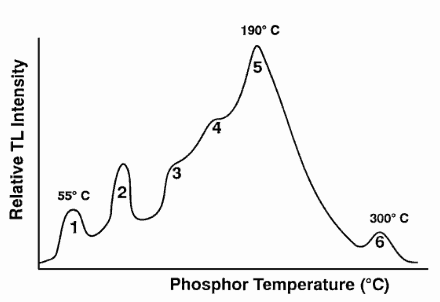As was written, previously absorbed energy from electromagnetic radiation or other ionizing radiation in these materials is re-emitted as light upon heating the material. The intensity of light emitted is measured by the TLD reader, depending on the radiation exposure. A typical basic TLD reader contains the following components:
- Heater. Heater raises the temperature of the TL material
- Photomultiplier tube. PMT amplifies and measures the light output.
- Meter/Recorder. The recorder can display and record data.

The TLD chip must be heated in this TLD reader to obtain the dose received. The trapped electrons return to the ground state and emit photons of visible light. The amount of light emitted relative to the temperature is called the glow curve. This curve is analyzed to determine the dose. After the readout is complete, the TLD is annealed at a high temperature. This process essentially zeroes the TL material by releasing all trapped electrons. The TLD is then ready for reuse. There are two types of readers. Automatic and manual readers. The automatic TLD reader is a lot more complicated than it might expect.